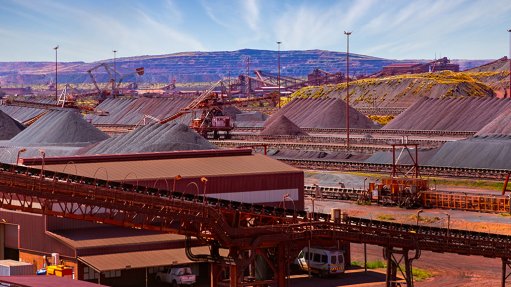
The Minerals Council South Africa said on June 4 that its index of mining input costs increased by 7.2% year-on-year, matching the highest rate so far this year, which was recorded in January.
This rise in input costs coincided with an acceleration in the rate of increase for the producer price index (PPI), which rose by 5.1% year-on-year in April, up from 4.6% in March.
For context, consumer inflation went up by 5.2% year-on-year.
The analysis of individual components contributing to total mining input cost inflation in April indicates persistently high inflation rates for electricity and water, which increased by 15.3% year-on-year, the Minerals Council said, noting that these administered prices are putting significant pressure on mining input costs.
Costs for finance, insurance, real estate and business services remained high at 11.8% year-on-year, reflecting the elevated cost of finance and capital, as seen in the prime lending rate in South Africa.
Additionally, coke and refined petroleum costs rose by 8.9% year-on-year, driven primarily by an increase in Brent crude prices, which averaged $89/bl in April compared with $83.50/bl a year earlier.
Transport and storage costs also increased by 7.8% year-on-year.
Conversely, various intermediate inputs, including other mined resources such as coal and metals used in extraction processes, decreased year-on-year in April. This decline in mining and quarrying inputs over the long term has helped reduce the overall input costs coming from this component over the past year.
One of the main factors driving input cost inflation in April was the 12.74% tariff increase for all direct customers of state-owned utility Eskom, which took effect on April 1. This hike significantly impacted mines that are direct Eskom customers.
Further, mining and quarrying input prices increased in April compared with March, particularly owing to 8.2% higher coal, 8.7% higher copper, and 1.8% higher iron-ore prices month-on-month.
Conversely, the appreciation of the rand versus the dollar from March to April made imports relatively less expensive, resulting in a 1.6% reduction in the cost of imported intermediate inputs.
The gold sector once again experienced the highest average increase in input cost inflation in April. Following gold, the coal, other mining and quarrying and platinum group metals sectors saw the fastest rises in input costs.
These trends highlight the varied impact of input cost inflation across different mining sectors, with gold being the most electricity-intensive, the Minerals Council said.